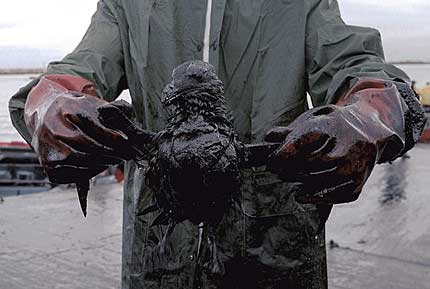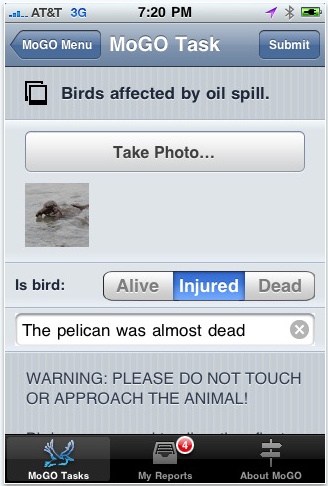 Since April 20, people around the world have watched as millions of gallons of oil spill into the Gulf of Mexico. We tune in to news accounts of oil-covered pelicans, tar balls on beaches, and underwater “plumes” that may be even more damaging that the oil washing up on our shorelines. An entire ecosystem, not to mention people’s livelihoods, is in peril.
Since April 20, people around the world have watched as millions of gallons of oil spill into the Gulf of Mexico. We tune in to news accounts of oil-covered pelicans, tar balls on beaches, and underwater “plumes” that may be even more damaging that the oil washing up on our shorelines. An entire ecosystem, not to mention people’s livelihoods, is in peril.
The sadness and disgust run deep. Political columnist David Brooks, speaking on the June 11 PBS Newshour, said,
“We’re Americans, and deep in our cultural DNA is a sense of wilderness, of nature, that is a part of us. And whether it’s Alaska, or out west, or the Gulf, when that’s polluted, it goes deep into the spiritual sense of who we are as a country.”
Thinking about solutions
Because our response to the spill is so visceral–you can almost feel the oil on your skin when you hear reports of it spreading ever further–the most effective teaching tools may also be visceral.
 For me, that means hands-on activities. Here’s an example: with little more than cooking oil and cheesecloth, you can create your own mini-spill in your classroom or kitchen, then have learners experiment with ways to collect and dispose of spilled oil.
For me, that means hands-on activities. Here’s an example: with little more than cooking oil and cheesecloth, you can create your own mini-spill in your classroom or kitchen, then have learners experiment with ways to collect and dispose of spilled oil.
Howtosmile.org has other hands-on activities related to oil spills as well. For more background science, check out Kim Lightle’s recent post on the spill, which lists resources including those that provide images of the spill, a chemistry perspective, and an online tool for showing how big the spill is compared to your town.
SMILE’s May e-newsletter focused on teaching to the spill. Sign up for the newsletter or see a sample newsletter.
Hands-on ways to help
You can take ‘hands-on’ even more literally, with these citizen science projects that aim to help us understand the extent of the environmental damage wrought by the spill.
Help count ghost crabs in affected areas
Drew Wheelan of the American Birding Association models his crab-counting citizen science project on similar bird counts. “By taking a close look at the populations of the ghost crab,” he writes on his blog, “we may be able to paint a more detailed picture of what has happened to these near-shore ecosystems, and the birds that inhabit them. We are asking that people here in affected areas count ghost crabs, but also anyone else, even if the oil may never touch your shores.” Wheelan gives explicit, step-by-step instructions on how to help out in a recent blog post.
There’s an app for everything
If you’re in the Gulf area, you could collect spill data using your iPhone. MoGO (Mobile Gulf Observatory) is a free app that turns you into a citizen scientist: you take and submit photos of oiled, injured, and dead marine and coastal wildlife; tar balls on beaches; oil slicks on water; and oiled coastal habitats, thereby helping wildlife experts find and rescue oiled birds, sea turtles, and dolphins.
Photo of oily bird (at top of post) by Greenpeace



Anything that can be done to increase awareness of and educate people about this ecological disaster is crucial. It’s so easy for important issues to become “old news” if they persist beyond the initial news cycle. The full scope and extent of damage from this spill won’t be known for many years, if ever. Hopefully it can serve as an example for all of us and help teach how to avoid future ecological disasters before they become catastrophic.
For a while I had a difficult time understanding why they were having so much trouble capping the oil. I forgot that there’s so much pressure behind the oil making the task troublesome! This video from the Exploratorium’s Teacher Institute used simple and readily available materials to demonstrate the gusher. [http://www.youtube.com/watch?v=b5TPLjkkTOY]